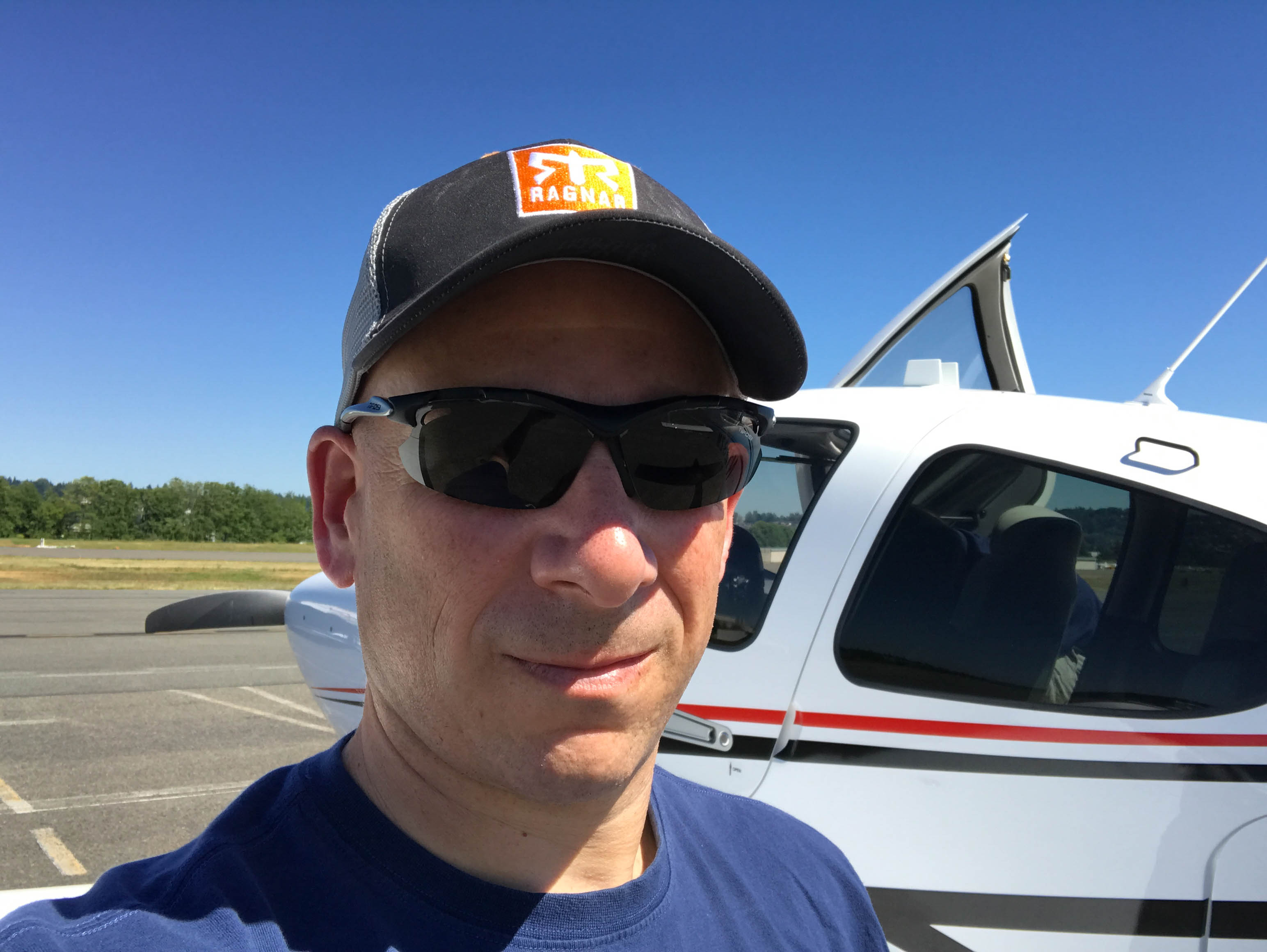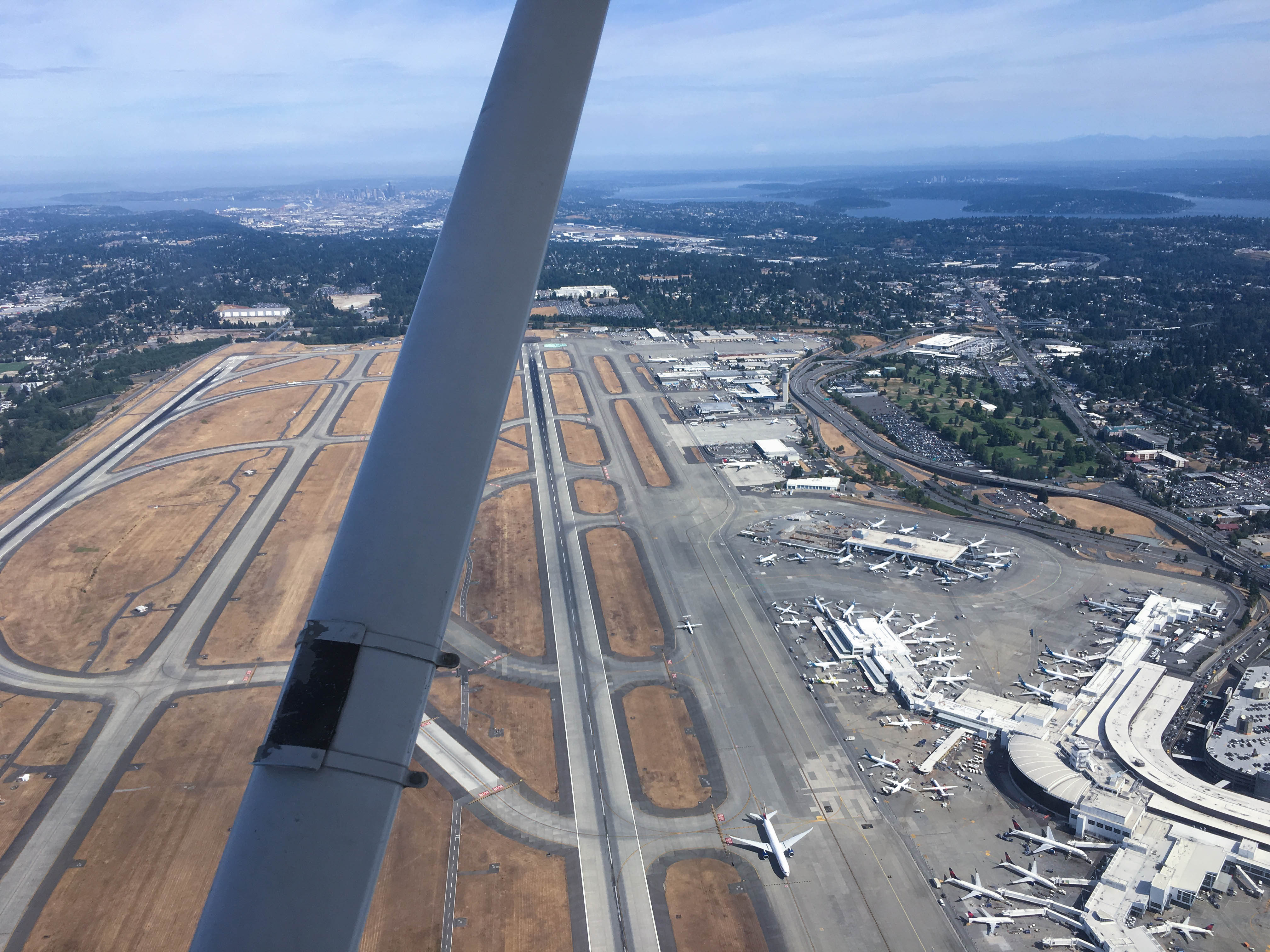Lessons 10 and 11: Instructor Rotation
Since my last post on flying, much has happened. I took a vacation (in Smith Mountain Lake, Virginia), I flew four times, and my instructor pilot resigned. This last point had a significant impact in how I was thinking about my flying. I heard via an email from the assistant chief while I was in Virgnia: “Grant is leaving to pursue his flying career. We’ve paired you up with Shane.” My second discovery flight (why two? long story…) was with Shane in a Cirrus SR20, and I enjoyed that, so I looked forward to flying with him. That said, I was afraid of more churn. In the 9 lessons I had thus far, I had flown with 4 different pilots - Grant, Jim (the chief), Jamie, and Jamal. If you included my two discovery flights, it jumps up to 6 (Shane and Scott). All these pilots were great in their own way, and I learned much from each of them. However, in the process towards becoming a private pilot, you need consistent, steady feedback in your faults, so that you can improve. It’s tough to get that when your instructor changes so frequently. In the last 4 or 5 flights, though, Grant and I were on a roll, and had done some consistent flying together. Grant’s resignation now made me think that the churn would begin anew.

As I mentioned, though, I enjoyed my flight with Shane. He was a former military pilot and navigator, and I liked how he brought that rigor to his flying. One of my best friends is a former Air Force KC-10 pilot, and hanging with him was one of my inspirations to start this journey. Then I looked at the online scheduling application, so I could move all my future lessons from Grant to Shane. I looked at the next Saturday’s lessons, and Shane’s calendar was fully blocked. Sunday, same situation, next weekend, same. Ah. Shane doesn’t work weekends. Unfortunately, that doesn’t work for me - I have a full-time job (working on Alexa Smart Home), and most of my flying happens around those hours. Shane and me, it just wasn’t going to work.
This situations was unresolved when I got back from vacation. My last flight with Grant would be on Sunday, August 20th. We decided to fly out to Bremerton Airport (KPWT), an untowered airport, to work on airport operations. Looking at a map, the direction of flight from Renton would be nearly straight east. There’s a little airport between here and there named SeaTac, a Bravo airport.
The FAA regulates airspace, and each class of airspace is given a letter from A to G. Alpha airspace is anything over 18,000 feet. Bravo, Charlie, and Delta are all classes of airspace around airports (I’ll leave the rest of the classes for your homework assignment). The differences between B, C, and D is all about the size and complexity of the airport. Class B airspaces are around the nation’s biggest airports (think O’Hare, JFK, LAX, etc). Charlie airports are the mid-sized regionals (Portland is the closest one to me), and Delta are your smaller towered airports. Renton and Boeing field near me are Delta airports. The idea for these airspaces is that they are all traffic-controlled by ATC. Charts show the size and configuration of the airspaces, with B being the largest and most complex, and D being the smallest and simplest. What they all have in common is that you need to talk to ATC to enter, although the rules seem complex and arcane. Since the Class B airspaces are around the biggest airports, you can imagine, the controllers controlling this airspace are the busiest, most professional, and least accomodating of newbies like yours truly.
So as I was looking at the chart, and thinking about how to get from KRNT to KPWT, I said to Grant, “I’m assuming we’ll go north, and fly under the shelf that’s over Green Lake?” He said, “That’s an option, but the fastest way is to request a transit through SeaTac’s airspace.” We talked through how we’d do that. It’s pretty simple, really. When we requested taxi-clearance from Renton ground, we’d request a transit through SeaTac. Renton Tower would talk to Seattle approach for us. If SeaTac had room in their pattern, they’d communicate (through Renton Tower) a unique transponder code, so they could identify us. Once we were up in the air, and about to leave Renton’s airspace, we’d contact Seattle Approach, and finalize the transit. I’d do all the radio calls with Renton, Grant would handle the radios with SeaTac.

So that’s what we did, and the plan went off without a hitch. It was a beautiful flying day. SeaTac cleared us. They asked us to hold 2,000 ft altitude, and fly directly over the threshold of 16C. Grant captured a pretty wicked picture of it. I know that I’m an aviation nerd, but this had to be one of the coolest experiences ever.
The rest of the flight was pretty uneventful. We did a full stop landing at Bremerton (my landings still suck), took off, transited SeaTac again and landed at Renton. During the flight, we did a bit more hood time, turning to headings, climbing and descending. One funny thing did happen as we left SeaTac’s airspace. SeaTac Approach cleared us direct into 34 at Renton. We were planning on flying the usual approach in, which has us deviating to the south a little bit then turning and performing a normal southerly approach into Renton, but given that we got these instructions, we planned a straight-in. We left SeaTac’s airspace, and switched our radios to Renton Tower. We gave them our position, and the controller sounded confused/frustrated. She said, “Did SeaTac clear you in?” We answered in the affirmative, to which she responded that there was no room in the pattern for us at the moment and could we please fly a normal approach. There was never any danger, but we expected that the two ATC folks were talking to each other. Guess not.
So that wrapped up the end of an era - flying with Grant.
Two days later, I flew with Shane. At this point, it was clear to both of us that Shane would not be my full-time instructor, but I saw it as an opportunity to get another set of eyes on my flying. I told him that I still sucked at (rudder control)[/blog/2017/07/31/right-rudder], and I had yet to pull off a landing where the instructor was fully hands off. He suggested we fly up to the practice area, do some slow flight, some stalls, then come back and do some pattern work. This flight was awesome. The last time I had done slow flight and stalls was with Jim, and I was a little overwhelmed with all of it. Shane is a solid teacher, and he talked me through the procedures you use for these maneuvers. By the end of 45 minutes of slow flight practice and power-off stalls, I really felt like I had it, and it wasn’t nearly as scary as it felt with Jim. The pattern work was also useful. I realized in the landings that where you look is super important. While I don’t have it yet, there’s hope. Thus far, it’s been the most frustrating part of flying. When you’re learning how to land, you have 5-10 seconds of landing practice, followed by 10 minutes of pattern flying. I want to practice 50 landings at a go, but that will take many, many hours of flying.
At the end of this lesson, I still didn’t have a full-time instructor assigned, but I did have some flights scheduled with Jamie. More on flying with Jamie next time.